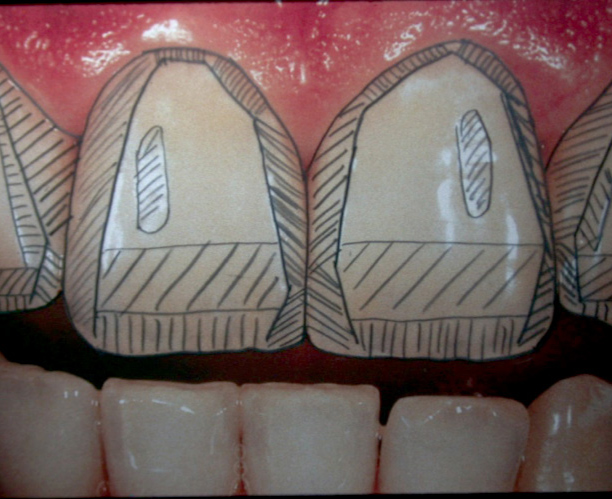Free CE eBook Downloads from Parkell
eBooks from CDEWorld put the dental information you're looking for right at your fingertips, right when you need it. Accessible 24/7, CDEWorld eBooks can be easily downloaded to your laptop or mobile device for future reference and sharing. Try one today!

End to End: A Look at Select GI Tract Pathologies and Their Oral Manifestations
By Sherri Lukes, RDH, MS, FAADH
Supported by: Parkell
Dental professionals are becoming more involved in interdisciplinary care, identifying symptoms in the oral cavity that may be indications of systemic disease. Beyond detecting and identifying oral symptoms, the dental professional also plays an important role in understanding when and how to make recommendations that will benefit the patient’s oral health and mitigate oral effects of systemic issues. Download to earn 2 FREE CEU now!

Implant-Supported Restoration Techniques
By Gregg Helvey, DDS, CDT
Supported by: Parkell
This article reviews implant-supported restoration techniques. It explains the advantages and disadvantages of screw-retained versus cemented implant-supported restorations and the variations in techniques in the fabrication process. It also describes a technique in restoring the loss of gingival tissue with implant restorations in the anterior region.

Managing Tooth Loss and Esthetics in a Single Visit
By David Burt, DDS
Supported by: Parkell
This article describes how technology and procedural knowledge have allowed dentistry to not only be painless, but also esthetic, shortly after a tooth is lost.

Digital Scanning and Implants
By David Burt, DDS
Supported by: Parkell
This article explores how digital scanners can be used for impressions in implant procedures.

Managing Gingival Tissue During Crown Cases: Techniques in Soft-Tissue Displacement
By Jeffrey B. Dalin, DDS
Supported by: Parkell
This article explains how achieving expertise in technique-sensitive tissue retraction methods will lead to restorations that ultimately seat easier and require fewer adjustments.

Understanding Today's Bulk-fill Posterior Composite Restoration Techniques
By Todd C. Snyder, DDS
Supported by: Parkell
This article reviews the characteristics of bulk-fill composites and outlines technique recommendations for preventing polymerization shrinkage, postoperative sensitivity, and microleakage.

Removable Prosthetic Options for Implant Dentistry
By Thomas Bilski, DDS
Supported by: Parkell
This article explores several factors to be considered when determining prosthetic possibilities, including proper fit, timing and sequencing, reline therapies, and the process of transitioning from fixed-appliance therapy to removable therapy.

Creating Veneer Provisionals Using Silicone Matrices and Models
By Lee Ann Brady, DMD
Supported by: Parkell
This article reviews three specific provisionalization techniques and the materials and armamentarium that could be selected for use during the process, including silicone matrices and silicone models.

Pulp Testing and Apex Locators: Eliminating the Guesswork From Endodontic Diagnostics
By Joseph Chikvashvili, DDS
Supported by: Parkell
This article discusses the importance of taking accurate periapical radiographs and bitewings when diagnosing an injured tooth.

Planning Considerations and Retention Options for Implant Restorations
By Amerian D. Sones, DMD, MS
Supported by: Parkell
When placing a dental implant, careful consideration must be given to the final restoration. This eBook includes case illustrations of three different types of single-implant restorations— screw-retained, cement-retained, and a hybrid screw-cementable restoration.

Universal Adhesives: Are They Truly Universal?
By Gregg A. Helvey, DDS, MAGD, CDT
Supported by: Parkell
Are universal adhesives truly universal, can they be used without limit or exception, and if so, do those exceptions depend on the conditions? This eBook will focus on the different application modes and the most predictable bonding techniques in an attempt to answer these questions.

Electrosurgery in the Esthetic/Restorative Practice: Everyday Procedures That Help Create Excellence in Dentistry
By Robert A. Lowe, DDS
Supported by: Parkell
Used in dentistry for more than a century, electrosurgery has long been an effective soft-tissue cutting method that offers a variety of applications for clinicians. This article reviews advantages and disadvantages of electrosurgery and presents a variety of clinical examples of how it can be utilized to achieve successful outcomes in periodontal and general restorative procedures.

Maximizing the Power of Ultrasonics
By Tim Donley, DDS
Supported by: Parkell
Hands-on training in ultrasonic debridement can facilitate mastery of ultrasonic instrumentation. This article reviews the insights into the etiology of periodontal disease and discusses the proper use of ultrasonic instrumentation.

Exquisite Impressions: A Key to Restoration Success
By Lee Ann Brady, DMD
Supported by: Parkell
Being able to accurately capture an impression affects the dentistry we provide everyday. This eBook discusses four impression materials and proper technique in order to maximize accuracy and achieve exquisite final impressions.

The New Goal of Periodontal Therapy and How Best to Achieve It
By Tim Donley, DDS
Supported by: Parkell
Clinicians can no longer take a now-you-see-it—or feel it—approach to periodontal debridement therapy. This article redefines the goals of periodontal therapy and how to best meet these new goals.

Enhancing Dental Professionals' Response to Intimate Partner Violence
By Judy Henderson
Supported by: Parkell
IPV is a serious problem that requires a serious response from all healthcare providers, including dental healthcare providers; this article discusses how dental professionals can provide support and safe resources for patients who are victims of IPV.

Simplified Predictable Posterior Composite Resins
By Howard Strassler, DMD
Supported by: Parkell
Clinicians face numerous challenges related to providing the tooth-colored composite restorations. New materials, including bulk-fill composites that can be placed in single 4-mm increments, can help provide predictable success.

Anterior Esthetics: Managing Difficult Challenges
By Gregg A. Helvey, DDS, MAGD
Supported by: Parkell
The first step in dealing with anterior cases is to determine the patient’s expectations.